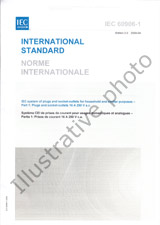We need your consent to use the individual data so that you can see information about your interests, among other things. Click "OK" to give your consent.

ISO 10303-224:2006-ed.3.0
Industrial automation systems and integration — Product data representation and exchange — Part 224: Application protocol: Mechanical product definition for process planning using machining features
Automatically translated name:
Industrial automation systems and integration -- Product data representation and exchange -- Part 224: Application protocol: Mechanical product definition for process planning using machining features
STANDARD published on 12.9.2006
The information about the standard:
Designation standards: ISO 10303-224:2006-ed.3.0
Publication date standards: 12.9.2006
SKU: NS-421816
The number of pages: 1062
Approximate weight : 3217 g (7.09 lbs)
Country: International technical standard
Category: Technical standards ISO
The category - similar standards:
Annotation of standard text ISO 10303-224:2006-ed.3.0 :
Description / Abstract: ISO 10303-224:2006 documents the application protocol for the representation and exchange of information for manufacturing single piece mechanical parts. ISO 10303-224:2006 includes explicit and implicit shape representation of machining features. It addresses manufacturing part properties, process control documentation, manufacturing specifications, administration data, and requisitions.
Similar standards:
20.1.2005
30.4.2010
30.4.2010
30.4.2010
30.4.2010
30.4.2010
We recommend:
Technical standards updating
Do you want to make sure you use only the valid technical standards?
We can offer you a solution which will provide you a monthly overview concerning the updating of standards which you use.
Would you like to know more? Look at this page.


 IEC/TR 61508-0-ed.1...
IEC/TR 61508-0-ed.1...
 Cookies
Cookies
